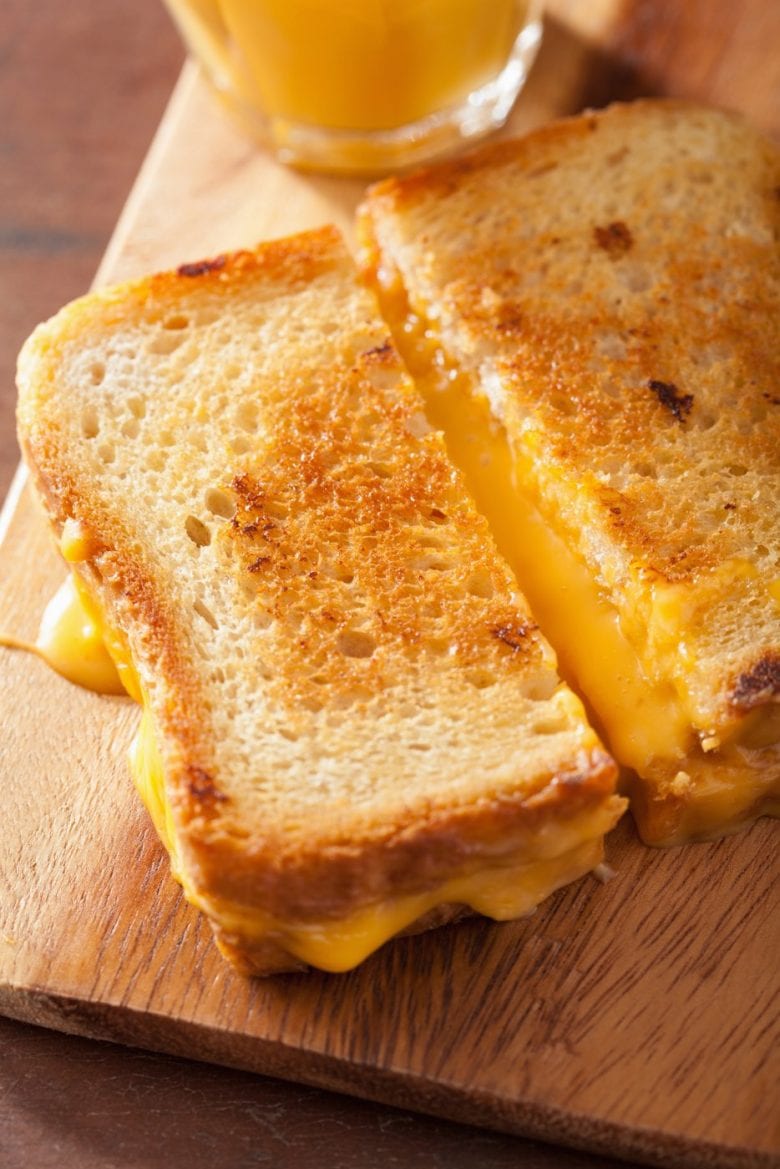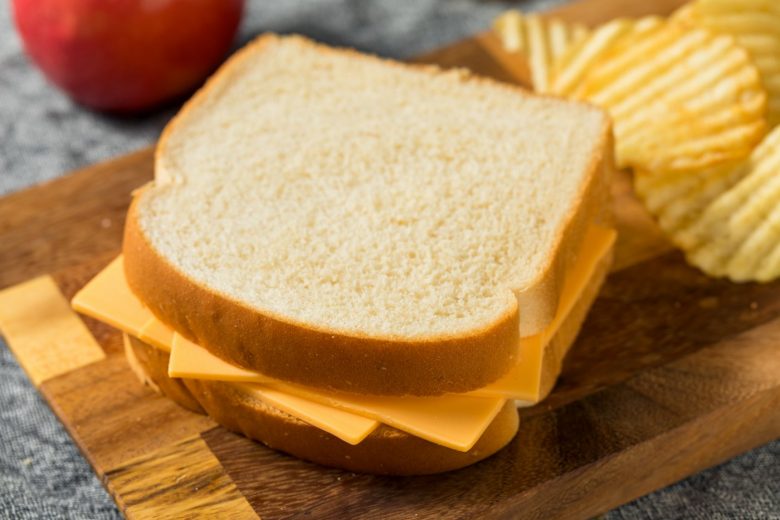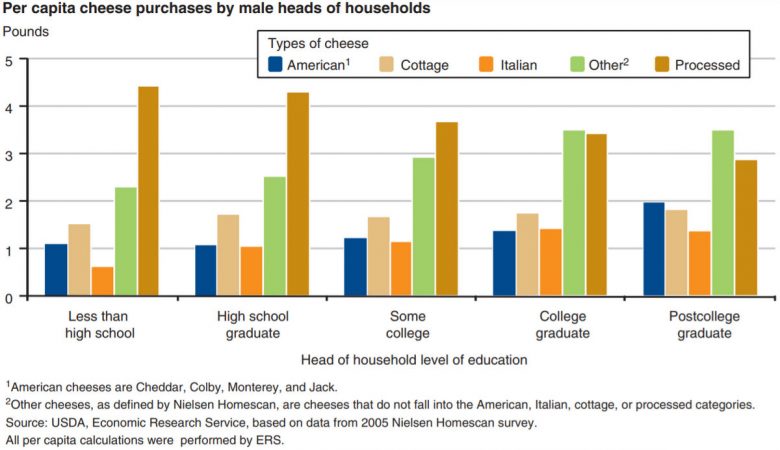In terms of their similarity to fine French cheeses, faves like Velveeta Slices and Kraft Singles probably rank only slightly ahead of Cheez Whiz, spray cheese, and the powdered stuff that comes in the mac & cheese box.
Which brings us to the question: What is American cheese? You may have noticed that it bears little resemblance to other cheeses — or other foods, for that matter.
Somehow, though, it’s everywhere — on burgers and cheese sandwiches and melted into queso dips. So what’s in it, and how does it differ from the cheese we eat that doesn’t come in individually-wrapped, perfectly uniform slices?
American cheese: Square “food product”
Our bologna might have had a first name (it’s O-S-C-A-R), but American cheese was labeled from the get-go with a really dull moniker.
Come on — French cheese, Italian cheese, Swiss cheese… the very names evoke thoughts of flavorful, aromatic cheeses with beautiful names like Camembert, Romano, Parmigiano-Reggiano, Gruyere and Gorgonzola.
And what comes to mind when you hear the term American cheese? Probably something like “rubbery orange squares.” The technical term for the slices wrapped in plastic is “processed cheese product.”
It wasn’t always this way. For example, in the early 20th century, American cheese meant simply “cheese made in America.”

Now — and although the USA produces a wide variety of cheeses stateside (particularly in California and Wisconsin) — the four that the USDA considers American cheeses are Cheddar, Colby, Monterey and Jack.
The single-slice cheese we all know is a riff off Cheddar and Colby that was creatively modified to make it really meltable.
James Lewis Kraft — who founded the company that still bears his name — got the processed cheese party started in America back in 1916 when he patented a method for melting Cheddar cheese so he could pour it into cans and jars.
It’s that melty goodness that makes American cheese so perfect for delicious and gooey grilled cheese sandwiches.

What is in American cheese & how cheesy is it?
So what’s inside the super-popular orange cheese? You can tell by the color, texture and shape that they’re not using the ancient European recipes that use just milk, rennet and salt.
There are a few variations, each labeled according to strict legal guidelines, so we can know what we’re eating.
Processed cheese is prepared by mixing one or more cheeses, with the aid of heat, with an emulsifying agent. The cheese is then poured into molds to solidify. The final product can have a maximum moisture content of 43%, and must have at least 47% milkfat.
Cheese food must contain at least 51% of the cheese ingredient by weight, have a moisture content less than 44%, and contain at least 23% milkfat.
Cheese product may contain less than 51% cheese, and does not need to meet the maximum moisture content of 43% and/or the 47% minimum milkfat standards of processed cheese.
MORE: Check out these retro Cheez Whiz recipes from their Idea Book (1974)
Is American cheese real cheese?
Many brands of those slices are considered “cheese product,” meaning they have less than 51% real cheese. Usually, they contain milk and milk products instead. (See some ingredient lists below.)
In the FDA’s official definition of pasteurized process cheese, the word “plastic” is actually used (though undoubtedly referring to the material’s plasticity, and does not suggest it’s made out of the same stuff used to make Pokemon figurines).
Also interesting is the way the EPA — that’s the Environmental Protection Agency — describes the American cheese manufacturing process:
Cheeses are selected to be processed from both mild and sharp cheeses. For example, American cheese is made from Cheddar and Colby cheeses. Once selected, the cheeses must be analyzed for their fat and moisture contents to determine the proper amount of emulsifiers and salts to be added. Cheese surfaces are cleaned by scraping and trimming, and the rinds are removed.
After cleaning, the cheese blocks are ground in massive grinders, combined, and the cheese mixture is heated. At this point, the melted cheese separates into a fat and serum. Emulsifiers are added to disperse the fat, and create a uniform, homogenous mass. The molten cheese is removed quickly from the cookers and is pumped or dropped into packaging hoppers.

We love that cheese-like substance
Say what you will about the stuff’s clinical manufacturing process, but process cheese — whether in slices or a loaf — probably appeals to a lot of Americans because it lasts a long time (Land O Lakes 2% Milk Yellow American cheese), it melts nicely, the result is consistent… and it’s comparatively cheap.
You also can’t argue that it’s a pretty major ingredient in Philly cheesesteaks, grilled cheese sandwiches and chili cheese dip.
A USDA report from 2010 noted that white people bought over 12 pounds of cheese per person, and processed cheese was their number one cheese of choice. The households that bought the most and least are shown in this chart:

Interestingly, when it comes to the cheese’s popularity, they also found that folks living in the Midwest purchased more processed cheese than any other kind.
Even though it’s not in the same realm as Roquefort or Asiago, here in the USA, the stuff we call “American” cheese — despite being considerably higher in sodium than its kin — seems to be losing some popularity, but won’t be leaving our menus anytime soon.
American cheese ingredients
Brands vary, so, you need to look at the label to find out what’s in the item in question. Here are a few example ingredient lists.
Kraft Singles have the following ingredients: Milk, Whey, Milk Protein Concentrate, Milkfat, Sodium Citrate, contains less than 2% of Calcium Phosphate, Whey Protein Concentrate, Salt, Lactic Acid, Sorbic Acid as a preservative, Cheese Culture, Annatto and Paprika (color), Enzymes, Vitamin D3
Horizon Organic American singles contain: Cultured Pasteurized Organic Milk, Organic Nonfat Milk, Organic Milk Fat, Sodium Citrate, Salt, Calcium Phosphate, Organic Annatto (Color), Citric Acid, Microbial Enzymes (Non-Animal, Rennetless)
Land O Lakes 2% Milk Yellow American cheese has these ingredients: Cultured Pasteurized Milk And Skim Milk, Buttermilk, Milkfat, Contains Less Than 2% Of Salt, Sodium And Potassium Phosphates, Tricalcium Phosphate, Lactic Acid, Milk Protein Concentrate, Apo-Carotenal And Beta-Carotene (color), Enzymes.
NOW SEE THIS: Americans will always love their processed American cheese, so just ignore the haters!









